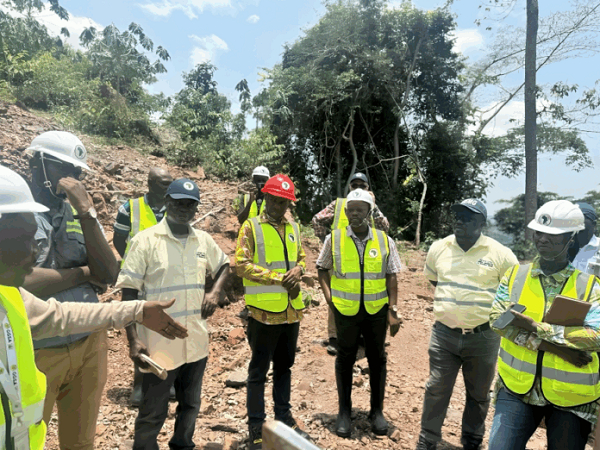
Potentially mineable nickel deposits have been discovered in the Oti Region—a development that could diversify the country’s mineral portfolio and attract investment into battery metal supply chains.
The find was made during ongoing iron ore exploration in the Gyamurume range by GIISDEC and GGSA
Potentially mineable nickel deposits have been discovered in the Oti Region—a development that could diversify the country’s mineral portfolio and attract investment into battery metal supply chains.
The find was made during ongoing iron ore exploration in the Gyamurume range by the Ghana Integrated Iron and Steel Development Corporation (GIISDEC) and the Ghana Geological Survey Authority (GGSA).
Preliminary drill samples indicate nickel concentrations exceeding one per cent, considered commercially viable, raising the prospect of Ghana joining the global race for critical minerals.
While certified laboratory results are pending, officials say the early data is promising.
“We have found iron ore in good quantities, but we do not want a situation where an investor comes in for iron ore and then unexpectedly benefits from nickel as well,” GIISDEC Chief Executive Officer William Okofu Darteh said during a technical visit to the site.
“We want to know the full picture—what minerals are here, in what quantities and of what quality—before we make decisions,” he further stated.
GIISDEC has commissioned consultants to conduct a comprehensive mineral content analysis, expected to be completed by September 2025.
The study will determine the grade, volume and distribution of both iron and nickel across the site.
“We are doing a complete analysis because our mandate allows us to handle not just iron and steel but related minerals like copper and nickel. So this is still within our operational scope under the law,” Mr. Darteh told the B&FT.
Once validated, the findings will be packaged for investors to attract capital into the full value chain rather than piecemeal extraction.

The GGSA confirmed the presence of nickel in all eight drill holes completed so far. “The concentrations observed are within the economic range—in some cases even exceeding one per cent —which is considered mineable for nickel,” David Yaw Kuma, senior geoscientist with the GGSA, added.
Initial testing was done using handheld scanners, but results from certified commercial laboratories are expected to provide greater precision.
“We used handheld scanners to do some of the initial checks, and what we saw was promising. But we are now waiting for the results from the certified commercial laboratories. Those lab results will give us a clearer picture of what we are dealing with,” Mr. Kuma explained.
He noted the project’s scope could be adjusted depending on the lab-confirmed grades.
“The nickel discovery was not planned, but it’s there, and now we have to evaluate it carefully. We cannot ignore it,” he said.
Nickel is a key input in lithium-ion batteries, and demand has surged in recent years due to the accelerating global energy transition. Ghana’s entrance into the nickel market would align with its broader strategy to position itself as a critical minerals supplier.
The country is also developing the Ewoyaa Lithium Project in the Central Region, which is projected to produce around 365,000 tonnes of spodumene concentrate annually. Together, the projects signal Ghana’s growing ambition in battery metals, traditionally dominated by countries like Indonesia, the Philippines and Australia.
Despite the optimism, GIISDEC and GGSA say it’s too early to draw firm conclusions.
“We are not jumping to conclusions. We need the lab results. Once we get that, we will know what steps to take,” Mr. Darteh noted.
“We have something worth looking at, but let’s wait for the proper data. That’s how you build a strong mining sector—by relying on science and facts, not just speculation,” Mr. Kuma added.
Should commercial viability be confirmed, the nickel discovery is expected to boost investor interest in the Oti Region and contribute to Ghana’s longer-term plans to expand and modernise its mining sector. GIISDEC says transparency will be key in investor engagement.
“We want to be transparent with investors. If we are offering iron ore, and there is also nickel, then we must be upfront about it. That is how we build trust and long-term investment,” Mr. Darteh stressed.
Source:Ghanaweb





